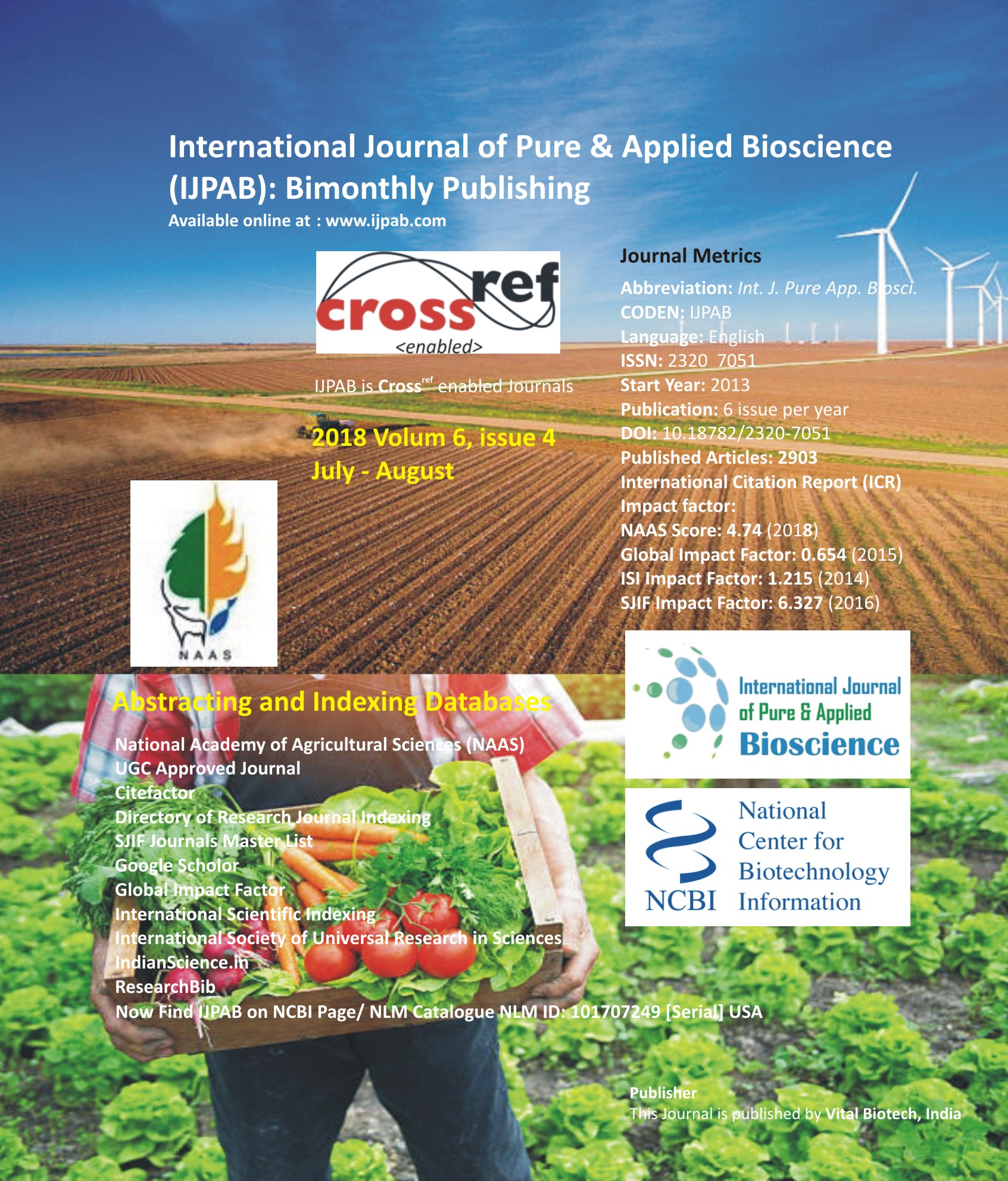
-
No. 772, Basant Vihar, Kota
Rajasthan-324009 India
-
Call Us On
+91 9784677044
-
Mail Us @
editor@ijpab.com
International Journal of Pure & Applied Bioscience (IJPAB)
Year : 2018, Volume : 6, Issue : 4
First page : (1) Last page : (10)
Article doi: : http://dx.doi.org/10.18782/2320-6795
Cross-Infectivity of Colletotrichum Isolates, Causal Agent of Anthracnose on Fruits in Three Regions of Cameroo
Keuete Kamdoum E.1*, Tsopmbeng Noumbo G. R.1 and Kuiate J. R.2
1Research Unit of Applied Botany, Faculty of Science, University of Dschang, Box 67 Dschang, Cameroon
2Research Unit of Microbiology and Antimicrobial Substances, Faculty of Science,
University of Dschang, Box 67 Dschang, Cameroon
*Corresponding Author E-mail: keuetekamdoumelie@yahoo.fr
Received: 15.07.2018 | Revised: 19.08.2018 | Accepted: 25.08.2018
ABSTRACT
Anthracnose, caused by Colletotrichum spp., is one of the main constraints to the commercialisation and exportation of fruits in Cameroon. The present study was designed to test the ability of the pathogen isolates from five fruits; avocado, banana, mango, pawpaw and plum to cause disease by cross-infectivity between fruits crops. Isolates of the pathogen were cultured in Potato Dextrose Agar (PDA). Pathogenicity and cross-infectivity of Colletotrichum spp. were carried on each of the five apparently healthy fruits collected from market in Dschang, West Region of Cameroon using wound inoculation method and dropping inoculation method. The results showed that lesion areas induced by different Colletotrichum isolates, varied with the fruit, the isolate as well as the origin of the isolates. Isolates of Colletotrichum formed larger lesion on fruits with the wound inoculation method compared to dropping inoculation method. Based on those lesions, three groups of isolates were found with the two methods. AVIS1, BAIS1, MAIS1, PAIS and SAIS isolates produced larger lesions, AVIS2 and MAIS2 induced smaller lesions and BAIS2 did not form any lesion except on banana, the original host. These results suggest further characterisation for a better identification and development of control strategies for the fungus.
Key words: Anthracnose, Colletotrichum isolates, Cross-infectivity, Fruits, Lesion areas
Full Text : PDF; Journal doi : http://dx.doi.org/10.18782
Cite this article: Keuete Kamdoum, E., Tsopmbeng Noumbo, G.R. and Kuiate, J.R., Cross-Infectivity of Colletotrichum Isolates, Causal Agent of Anthracnose on Fruits in Three Regions of Cameroon, Int. J. Pure App. Biosci.6(4): 1-10 (2018). doi: http://dx.doi.org/10.18782/2320-7051.6795

